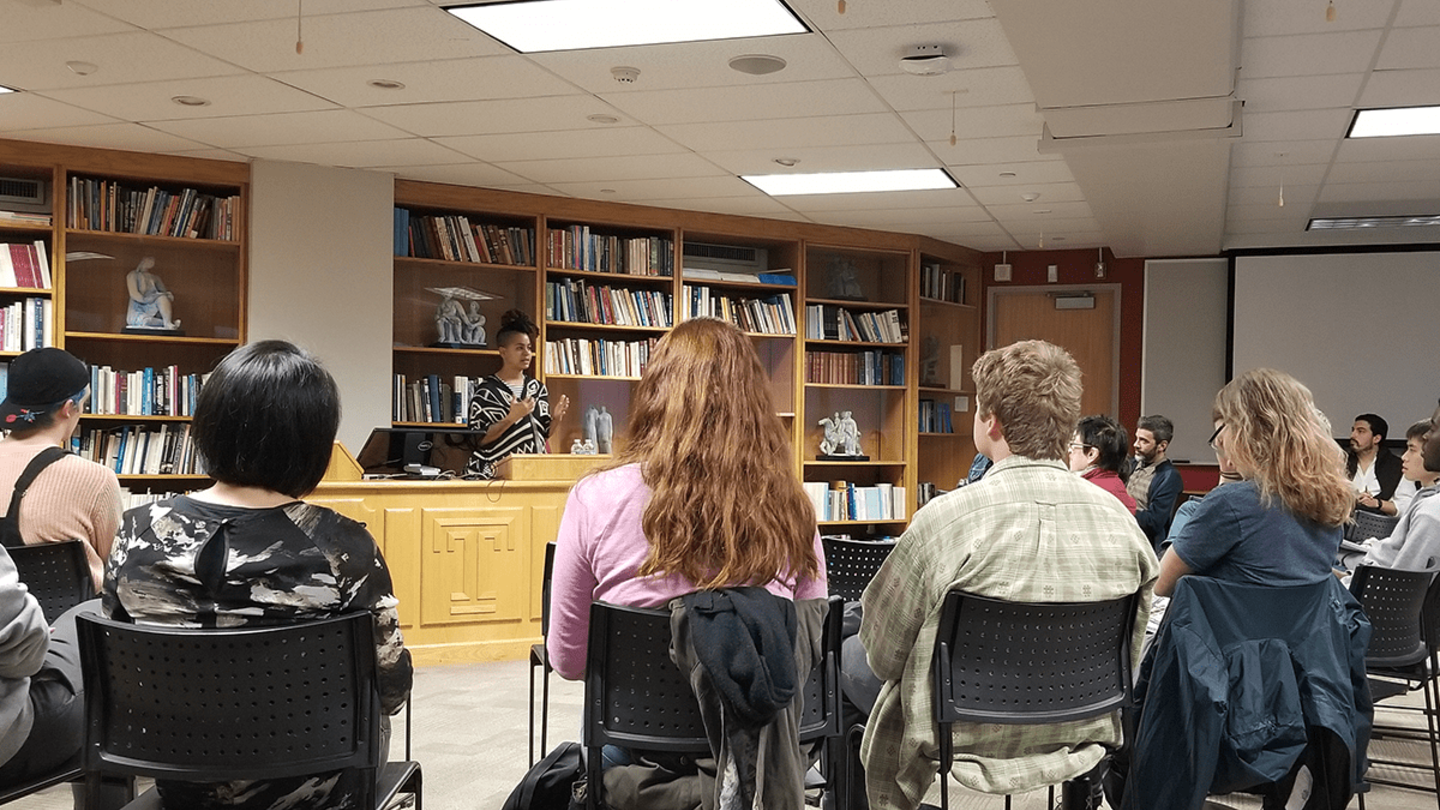
By: Nick Santangelo
Essays, in Aisha Sabatini Sloan's view, are both personal and impersonal all at once. She would know. Sloan, after all, has two published essay collections that explore issues of race, current events, art and more to her name. On Nov. 1, she visited the College of Liberal Arts to read from her essays and dissect them with the English Department's Creative Writing students.
She began by reading an essay titled Topography. The essay recounts a time in a Minnesota classroom when the teacher explained that everything around was once an ocean. Today, as Sloan's reading details, Minnesota is home to a large Somali population, connecting into her writing's through line of race.
The essay speaks of the naiveté of a child not realizing that hatred was everywhere, not just in some distant time and land. The Midwest began seeing an influx of people immigrating from the Horn of Africa in the '70s, but by the '90s, some were suggesting that the black race might eventually be absorbed by the white race. This, of course, is a fallacy. Nonetheless, Topography chronicles how blacks from the Horn of Africa have had to face hate speech and hate crimes as they've tried to find the foreign, snowy lands of the Midwest (and throughout the U.S., of course).
This theme bleeds into the thought process of the subject of another essay Sloan read from for Creative Writing students. Here, the subject is wandering in the wilderness in search of inspiration for her writing. But the wilderness is dotted with private properties, and the subject fears she's accidentally wandered onto one of them when she hears gunshots, thinking them a warning for her to clear out—and fast.
The subject, fearing she's about to have a panic attack, ends up running into some hunters. Asked if it was private property she'd wandered onto, an older man tells her "You're perfect!" She thinks it a strange reply, perhaps something he'd say to his daughter. It's an awkward encounter for the subject, a black woman deep in a predominantly white part of the country that mostly doesn't share her ideology. Still, she walks away from the encounter, physically safe if not entirely emotionally so.
When Sloan finished her reading, a student asked about her writing process. How does it begin? How does she piece it all together? She responded that it often begins for her with a sort of hunch as to how she'll fit two things floating around her head together. Coming back to read her essays now long after she wrote them, however, she can't help but ask herself, "What am I doing here?"
Before those essays came together, though, Sloan did a lot of reading and a lot of notetaking. Then she made collages out of her notes "like a semantic ritual, like a practice of absorbing the material." Next, she drew "over and over again" the arc of the threads she was weaving. A student asked if Sloan thought this process created a sort of private journal for the author, showing her mind at work.
"Yeah," she agreed, "and maybe that's why I'm hiding it, because what am I revealing about myself?"
One thing for certain: her writing process was a painstakingly slow one. That's why Sloan's trying something different for her next work.
"Now I'm trying to just sit and type and see what comes out."
